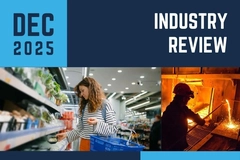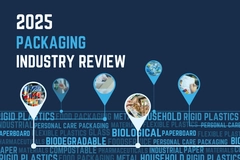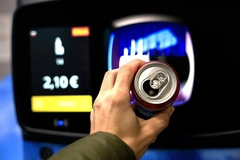Multivac expands with huge investment in Bulgarian production facility

08 Jun 2018 --- Multivac’s new production plant in Bulgaria, a result of 18.8 million investment, has a total surface area of 20,000 square meters and hosts a factory building with the “latest technology” for the production of Multivac parts. The complex also includes a state-of-the-art warehouse and logistics center, a training center and an administration building. The plant was inaugurated in Bozhuristhte with a lavish opening ceremony including prestigious guests such as the Prime Minister of Bulgaria.
“We are pleased to celebrate the opening of our first production facility in Eastern Europe here in Bozhurishte after a construction period of roughly two and a half years”, said Hans-Joachim Boekstegers, Managing Director and Group CEO of MULTIVAC. “Working in three shifts at this site, qualified specialists will produce machine parts and assemblies that meet the MULTIVAC quality standard. We are using modern turning and milling machines just as we also use at our headquarters in Germany. Incidentally, just a few weeks after commissioning, we are already utilizing our full capacity.”
“We are proud that the MULTIVAC Group has opted for Bulgaria as the place to expand its production capacity. Our goal is to be one of the most modern production sites within the Group and to guarantee the high MULTIVAC standards through our specialists,” added Ivaylo Dimitrov, Managing Director of Bulgaria Production Ltd.
In addition to the new plant in Bulgaria, Multivac has eleven additional production sites in Germany, Austria, Spain, Brazil, Japan, Finland and the USA, as well as more than 80 sales and service companies worldwide.
PackagingInsights has previously reported on Mutlivac launching the first-ever Europe-wide strategy on Plastics, as announced at Anuga FoodTec in Cologne earlier this year by Multivac's CEO, Hans-Joachim Boekstegers.
The first-ever Europe-wide strategy on plastics, adopted in January 2018, is a part of the transition towards a more circular economy. Under the new plans, all plastic packaging on the EU market will be recyclable by 2030, the consumption of single-use plastics will be reduced and the intentional use of microplastics will be restricted. This is creating both challenges and opportunities for packaging players.
Speaking to PackagingInsights in Cologne, Boekstegers notes: “This is the first time in my career that a reduction in plastic is really starting to impact the business, as the EU has set some demands on the environment, asking for more recyclable materials and more biodegradable products etc. On the other hand, nobody wants to pay for that. It is ultimately the consumer that decides. If they are willing to pay more, there will be a change in business. There is a lot more demand for this type of packaging, for example, a combined board with plastic.”
Despite the calls to reduce packaging materials and even moves towards a plastic-free supermarket, Boekstegers stresses that packaging remains relevant, particularly as the calls for food waste reduction intensify. “Packaging is a need. Without this type of packaging that we produce, the supermarket concept would no longer work. Plastic-free is something that you can do for one day – there is no protection and no shelf-life time. At the end of the day, you throw the packaging away – is that a good or a bad thing?” he concludes.










